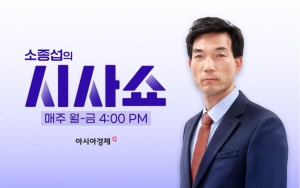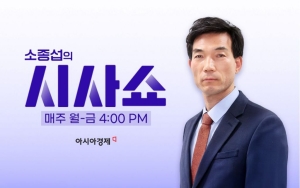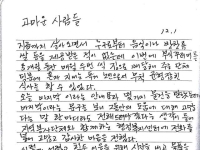[아시아경제 성정은 기자]지난 9일 열린 연방공개시장위원회(FOMC) 회의록 원문 내용 두 번째.
Committee Policy Action
In the discussion of monetary policy for the period ahead, most members agreed that the economic outlook had deteriorated by enough to warrant a Committee response at this meeting. While all felt that monetary policy could not completely address the various strains on the economy, most members thought that it could contribute importantly to better outcomes in terms of the Committee's dual mandate of maximum employment and price stability. In particular, some members expressed the view that additional accommodation was warranted because they expected the unemployment rate to remain well above, and inflation to be at or below, levels consistent with the Committee's mandate. Those viewing a shift toward more accommodative policy as appropriate generally agreed that a strengthening of the Committee's forward guidance regarding the federal funds rate, by being more explicit about the period over which the Committee expected the federal funds rate to remain exceptionally low, would be a measured response to the deterioration in the outlook over the intermeeting period. A few members felt that recent economic developments justified a more substantial move at this meeting, but they were willing to accept the stronger forward guidance as a step in the direction of additional accommodation. Three members dissented because they preferred to retain the forward guidance language employed in the June statement.
The Committee agreed to keep the target range for the federal funds rate at 0 to 1/4 percent and to state that economic conditions are likely to warrant exceptionally low levels for the federal funds rate at least through mid-2013. That anticipated path for the federal funds rate was viewed both as appropriate in light of most members' outlook for the economy and as generally consistent with some prescriptions for monetary policy based on historical and model-based analysis. In choosing to phrase the outlook for policy in terms of a time horizon, members also considered conditioning the outlook for the level of the federal funds rate on explicit numerical values for the unemployment rate or the inflation rate. Some members argued that doing so would establish greater clarity regarding the Committee's intentions and its likely reaction to future economic developments, while others raised questions about how an appropriate numerical value might be chosen. No such references were included in the statement for this meeting. One member expressed concern that the use of a specific date in the forward guidance would be seen by the public as an unconditional commitment, and it could undermine Committee credibility if a change in timing subsequently became appropriate. Most members, however, agreed that stating a conditional expectation for the level of the federal funds rate through mid-2013 provided useful guidance to the public, with some noting that such an indication did not remove the Committee's flexibility to adjust the policy rate earlier or later if economic conditions do not evolve as the Committee currently expects.
In the statement to be released following the meeting, members generally agreed that it was important to acknowledge that the recovery had been considerably slower than the Committee had expected. Although some of the slowdown in the first half of the year reflected transitory factors, most members now judged that only part of that weakness could be attributed to those factors. The Committee decided to note that the declines in energy and commodity prices from their recent peaks had led to a moderation of inflation and that longer-term inflation expectations remained stable. The Committee also characterized the economic outlook in terms of its statutory mandate and indicated that it expected the slower pace of economic expansion to result in an unemployment rate that would decline only gradually toward levels consistent with its dual mandate and that it saw the downside risks to the economic outlook as having increased. Most members also anticipated that inflation would settle, over coming quarters, at levels at or below those consistent with the Committee's mandate. The Committee noted that it had discussed the range of policy tools that were available to promote a stronger economic recovery in a context of price stability, and to indicate that those tools, including adjustments to the Committee's securities holdings, would be employed as appropriate.
At the conclusion of the discussion, the Committee voted to authorize and direct the Federal Reserve Bank of New York, until it was instructed otherwise, to execute transactions in the System Account in accordance with the following domestic policy directive:
"The Federal Open Market Committee seeks monetary and financial conditions that will foster price stability and promote sustainable growth in output. To further its long-run objectives, the Committee seeks conditions in reserve markets consistent with federal funds trading in a range from 0 to 1/4 percent. The Committee also directs the Desk to maintain its existing policy of reinvesting principal payments on all domestic securities in the System Open Market Account in Treasury securities in order to maintain the total face value of domestic securities at approximately $2.6 trillion. The System Open Market Account Manager and the Secretary will keep the Committee informed of ongoing developments regarding the System's balance sheet that could affect the attainment over time of the Committee's objectives of maximum employment and price stability."
The vote encompassed approval of the statement below to be released at 2:15 p.m.:
"Information received since the Federal Open Market Committee met in June indicates that economic growth so far this year has been considerably slower than the Committee had expected. Indicators suggest a deterioration in overall labor market conditions in recent months, and the unemployment rate has moved up. Household spending has flattened out, investment in nonresidential structures is still weak, and the housing sector remains depressed. However, business investment in equipment and software continues to expand. Temporary factors, including the damping effect of higher food and energy prices on consumer purchasing power and spending as well as supply chain disruptions associated with the tragic events in Japan, appear to account for only some of the recent weakness in economic activity. Inflation picked up earlier in the year, mainly reflecting higher prices for some commodities and imported goods, as well as the supply chain disruptions. More recently, inflation has moderated as prices of energy and some commodities have declined from their earlier peaks. Longer-term inflation expectations have remained stable.
Consistent with its statutory mandate, the Committee seeks to foster maximum employment and price stability. The Committee now expects a somewhat slower pace of recovery over coming quarters than it did at the time of the previous meeting and anticipates that the unemployment rate will decline only gradually toward levels that the Committee judges to be consistent with its dual mandate. Moreover, downside risks to the economic outlook have increased. The Committee also anticipates that inflation will settle, over coming quarters, at levels at or below those consistent with the Committee's dual mandate as the effects of past energy and other commodity price increases dissipate further. However, the Committee will continue to pay close attention to the evolution of inflation and inflation expectations.
To promote the ongoing economic recovery and to help ensure that inflation, over time, is at levels consistent with its mandate, the Committee decided today to keep the target range for the federal funds rate at 0 to 1/4 percent. The Committee currently anticipates that economic conditions--including low rates of resource utilization and a subdued outlook for inflation over the medium run--are likely to warrant exceptionally low levels for the federal funds rate at least through mid-2013. The Committee also will maintain its existing policy of reinvesting principal payments from its securities holdings. The Committee will regularly review the size and composition of its securities holdings and is prepared to adjust those holdings as appropriate.
The Committee discussed the range of policy tools available to promote a stronger economic recovery in a context of price stability. It will continue to assess the economic outlook in light of incoming information and is prepared to employ these tools as appropriate."
Voting for this action: Ben Bernanke, William C. Dudley, Elizabeth Duke, Charles L. Evans, Sarah Bloom Raskin, Daniel K. Tarullo, and Janet L. Yellen.
Voting against this action: Richard W. Fisher, Narayana Kocherlakota, and Charles I. Plosser.
Messrs. Fisher, Kocherlakota, and Plosser dissented because they would have preferred to continue to describe economic conditions as likely to warrant exceptionally low levels for the federal funds rate for an "extended period," rather than characterizing that period as "at least through mid-2013." Mr. Fisher discussed the fragility of the U.S. economy but felt that it was chiefly nonmonetary factors, such as uncertainty about fiscal and regulatory initiatives, that were restraining domestic capital expenditures, job creation, and economic growth. He was concerned both that the Committee did not have enough information to be specific on the time interval over which it expected low rates to be maintained, and that, were it to do so, the Committee risked appearing overly responsive to the recent financial market volatility. Mr. Kocherlakota's perspective on the policy decision was shaped by his view that in November 2010, the Committee had chosen a level of accommodation that was well calibrated for the condition of the economy. Since November, inflation had risen and unemployment had fallen, and he did not believe that providing more monetary accommodation was the appropriate response to those changes in the economy. Mr. Plosser felt that the reference to 2013 might well be misinterpreted as suggesting that monetary policy was no longer contingent on how the economic outlook evolved. Although financial markets had been volatile and incoming information on growth and employment had been weaker than anticipated, he believed the statement conveyed an excessively negative assessment of the economy and that it was premature to undertake, or be perceived to signal, further policy accommodation. He also judged that the policy step would do little to improve near-term growth prospects, given the ongoing structural adjustments and external challenges faced by the U.S. economy.
It was agreed that the next meeting of the Committee would be held on Tuesday?Wednesday, September 20?21, 2011. The meeting adjourned at 1:40 p.m. on August 9, 2011.
Videoconference Meeting of August 1
On August 1, 2011, the Committee met by videoconference to discuss issues associated with contingencies in the event that the Treasury was temporarily unable to meet its obligations because the statutory federal debt limit was not raised or in the event of a downgrade of the U.S. sovereign credit rating. The staff provided an update on the debt limit status, conditions in financial markets, plans that the Federal Reserve and the Treasury had developed regarding the processing of federal payments, potential implications for bank supervision and regulatory policies, and possible actions that the Federal Reserve could take if disruptions to market functioning posed a threat to the Federal Reserve's economic objectives. Participants generally anticipated that there would be no need to make changes to existing bank regulations, the operation of the discount window, or the conduct of open market operations. A number of participants emphasized that the Federal Reserve would continue to employ market values of securities in its transactions. With respect to potential policy actions, participants agreed that the appropriate response would depend importantly on the actual conditions in markets and should generally consist of standard operations. Some participants noted that such an approach would maintain the traditional separation of the Federal Reserve's actions from the Treasury's debt management decisions.
성정은 기자 jeun@
<ⓒ투자가를 위한 경제콘텐츠 플랫폼, 아시아경제(www.asiae.co.kr) 무단전재 배포금지>
















![[르포]](https://cwcontent.asiae.co.kr/asiaresize/308/2025121215342254446_1765521263.jpg)